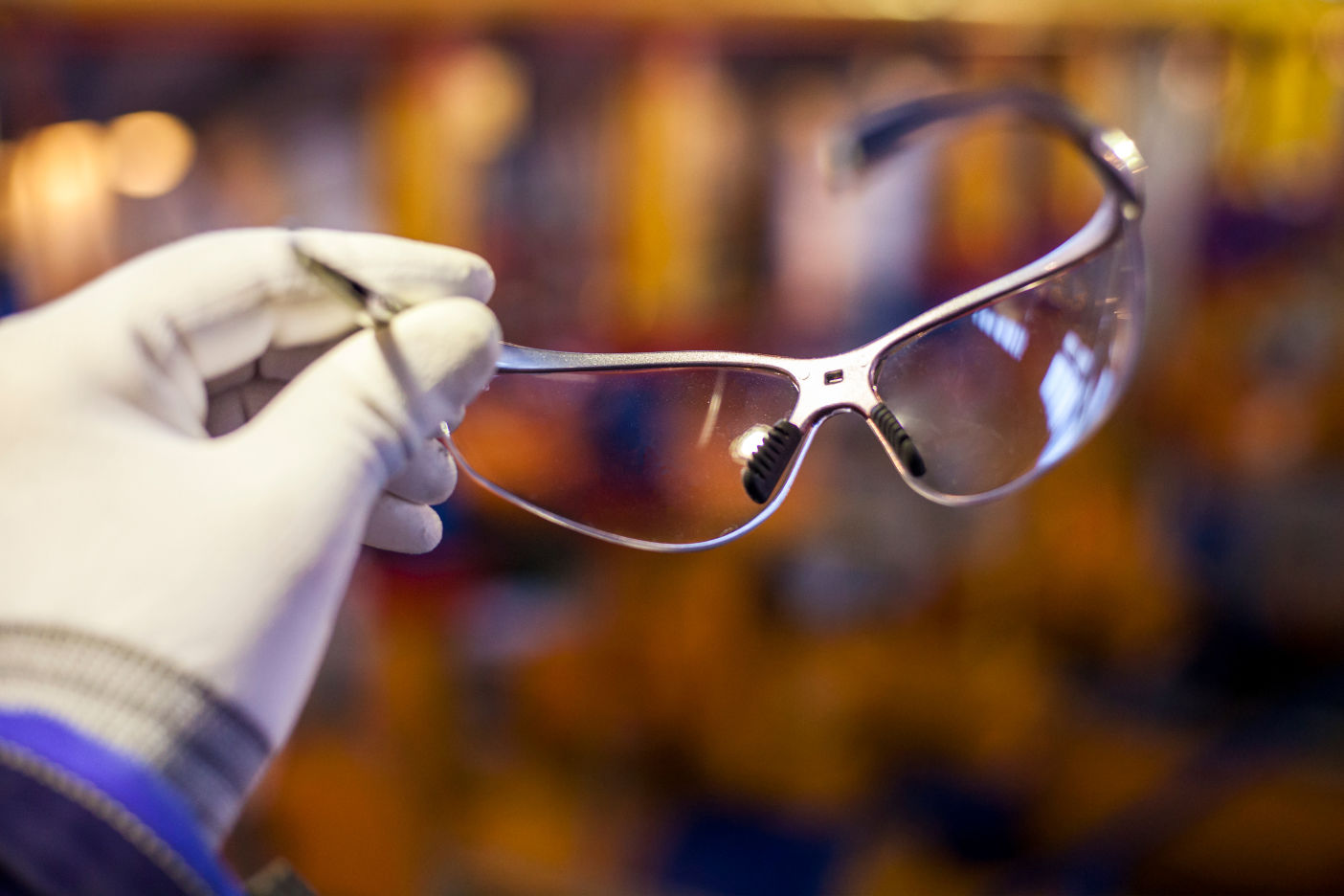
Eye injuries are exceedingly common in the workplace, affecting about 2,000 people yearly, according to the Centers for Disease Control and Prevention. They estimate that about 300 of these injuries require treatment at the hospital, and 100 result in more than a day away from work.
There are a few common ways that eye injuries can occur. Most injuries happen when the eye is scraped or hit by an object, flying debris of any size, or when an employee runs into an object.
Penetration by an object is the second most common cause of eye injuries at work. The third most common eye injury is sustained due to chemical or thermal burns.
The good news is that most of these eye injuries can be prevented with proper PPE, such as eye goggles, face shields, full-face respirators and safety glasses, depending on the nature of the job.
When Is PPE for Eye Protection Required?
According to the United States Department of Labor Occupational Safety and Health Administration, PPE is required for all body parts, including the eyes, whenever a situation on the job necessitates it.
A business is required to provide eye protection when workers are exposed to the following:
Hazards of processes or the environment in the workplace.
Radiological hazards.
Chemical hazards.
Mechanical irritants.
In short, if there is a task required of an employee that could result in injury to the eyes, it is necessary to provide clean and sanitary PPE for the eyes.
Are Businesses Required to Do More Than Provide PPE?
Yes. A business must provide access to sanitary and effective PPE for employees who need eye protection and must do the following:
Train employees on how to use PPE correctly.
Enforce the use of PPE by all employees.
Replace PPE that is reusable but broken or damaged to the extent that it is unusable or no longer protects against eye injury.
Maintain a constant supply of disposable PPE when appropriate.
In addition, employers need to make sure that eye protection covers the front of the eye and that it meets the following requirements:
Has side eye protection if objects come from the side.
Covers the eyes such that employees with glasses can still wear their lenses without obstruction and be protected.
Protects against vapors, liquid splashes and light radiation and not just against flying objects.
Includes filter lenses as needed so employees can work safely and effectively around or with light radiation.
What Happens if Current Safety Standards for Eye PPE Change?
The rules and regulations outlined by OSHA in September 2009 were augmented by the Final Rule. This addendum, in essence, allows for the codes for protective eye and face devices to be automatically updated when standards change in the industry, so employees can be protected immediately without waiting for updates to go through the regular review process.
Additionally, in 2020, OSHA regulations were updated to be on par with global standards, making room for innovations in protective eyewear and for adjustments to rules for industries that may require some protection but not necessarily the rigid protection outlined by OSHA. In these cases, it may be appropriate for businesses to provide “relaxed optics” to employees that protect them without going overboard.
Of course, this means there are new requirements for hazard assessments that can determine whether relaxed optics will adequately protect employees. These assessments usually include the following:
Testing.
Permanent markings.
Care and use of the eye protection.
The selection provided.
Does It Matter Who Manufactures Eye PPE?
Yes. Tests are done on specific models made by particular manufacturers, and the eye PPE chosen must match these specifications precisely. Aftermarket components may be used but only if tested with the original eye protection to ensure they are effective. For example, if eye protection is purchased and side shields are added later, they must be assembled and tested to ensure they fit the original device and work as needed.
Documentation is required that shows the details of this testing and all components included. The business will not be required to do this testing if it is done by another entity willing to take responsibility for compliance.
What Do Markings Have to Do With Eye PPE Compliance?
If an industry requires eye PPE designed for a specific use, or the manufacturer claims they are designed for a particular type of protection, this must be marked.
For example, markings are required for the following:
Any logos or indications of the manufacturer.
Standard designation.
The amount of coverage provided.
The level of optics .
Applicable hazard-specific marks like impact protection, optical radiation protection, splash and droplet coverage and dust and fine dust protection.
Antifog treatment, if appropriate.
Eye PPE Compliance Facts
To comply, eye protection that includes an antifog component must remain fog-free for at least eight seconds.
Lenses in any eye protection certified according to OSHA standards should be made from polycarbonate because it is impact-resistant and can absorb up to 99% of UV light.
Employees required to wear protective eye gear but who already wear prescription lenses will be required to wear eye PPE that incorporates their prescription.
References
Eye Safety. (July 2013). Centers for Disease Control and Prevention.
General Requirements. United States Department of Labor.
Eye and Face Protection. Princeton University.
